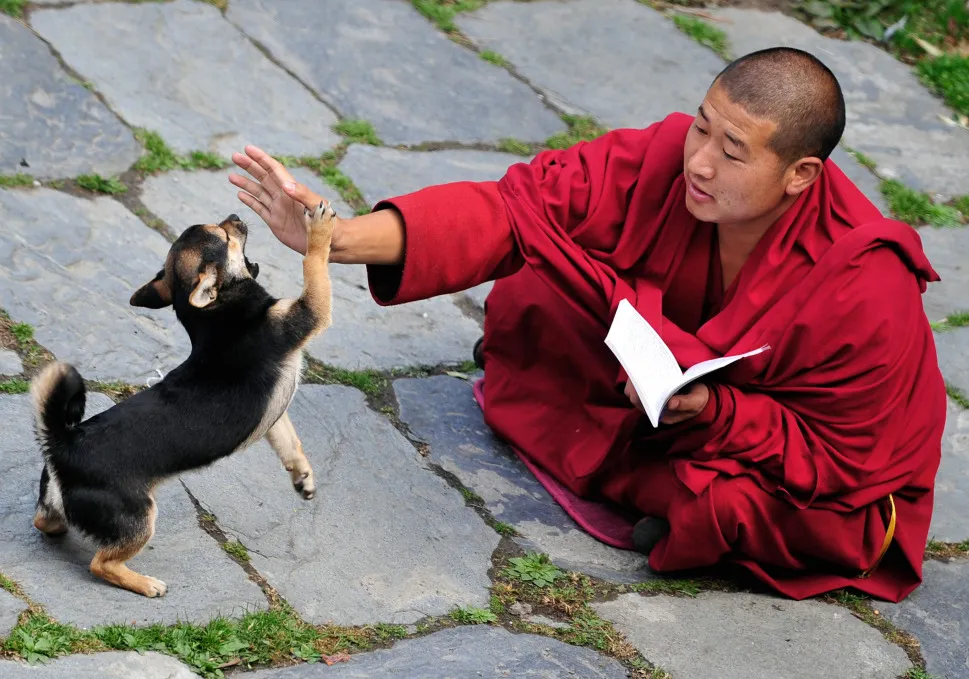Recognizing the Buddha Nature in All Beings
In the intricate tapestry of Buddhist philosophy, the reverence for life extends far beyond the human realm. From the noblest human to the tiniest insect, all sentient beings are regarded as equally precious. At the heart of this belief lies the concept of Buddha Nature—the inherent potential within every being to attain enlightenment and transcend the cycle of suffering. This fundamental principle underscores the interconnectedness and inherent worth of all life forms.
The Doctrine of Rebirth: Blurring the Boundaries Between Species
Central to Buddhist teachings is the doctrine of rebirth, which asserts that consciousness is not bound by the confines of a single lifetime. Rather, individuals undergo a continuous cycle of birth, death, and rebirth, known as samsara. Within this eternal cycle, the boundaries between species blur, as any being, human or animal, can be reborn into another form. This perspective emphasizes the fluidity and interconnectedness of all existence, highlighting the shared journey of all sentient beings.
Compassionate Care: Extending Support to Animals
In accordance with Buddhist principles, practitioners are encouraged to extend care and compassion to all sentient beings, including animals. Lobsang Dhargey, a revered teacher at the Tibetan Buddhist Centre, advocates for the recitation of mantras and prayers as a means of offering solace and support to animals throughout their lives. By invoking the blessings of enlightened beings such as Medicine Buddha, Green Tara, and Avalokiteshvara, practitioners aim to alleviate the suffering of animals and nurture their spiritual well-being.
Guiding Transitions: Spiritual Practices for Departing Souls
In the event of a companion animal’s passing, Buddhist practitioners employ spiritual practices to guide their transition. Mantras are chanted, water is blessed, and visualizations of divine blessings are invoked to offer a sense of peace and transcendence to the departing soul. Similarly, for animals on the brink of death, Lama Zopa Rinpoche prescribes the recitation of the Medicine Buddha sadhana, a powerful ritual believed to ease their passage into the next life.
Mantras for Your Pet:
Medicine Buddha: Om Bekhandze Bekhandze Maha Bekhandze Bekhandze Randza Samundgate Soha
Green Tara: Om Tare Tuttare Ture Soha
Avalokiteshvara (Chenrezig or Guanyin): Om Mani Padme Hum
Milarepa: Om Ah Guru Hasa Vajra Sarva Siddhi Hum
In the case of a deceased companion, the same mantras are beneficial, chanted at least 21 times, preferably 108, blowing water and visualizing the deity or the deity’s blessing light being absorbed. Then pour the water on the deceased.
Upholding the Sanctity of Life: Societal Norms and Practices
In Buddhist-majority countries like Thailand, the sanctity of life extends to societal norms and practices. Here, euthanasia is deemed unthinkable, and dying animals are often brought to temples to spend their final days in tranquility under the compassionate care of monks. Despite their own meager means, these monks willingly share their food and companionship with the animals, embodying the Buddhist principle that all life is inherently precious and worthy of reverence.
Conclusion
The Buddhist perspective on animals transcends mere compassion to embrace a profound recognition of their intrinsic worth and interconnectedness with all beings. Through acts of spiritual devotion and compassionate action, practitioners seek to honor and uplift the lives of all sentient beings, affirming the universal truth that we are all bound together in the intricate web of existence.



